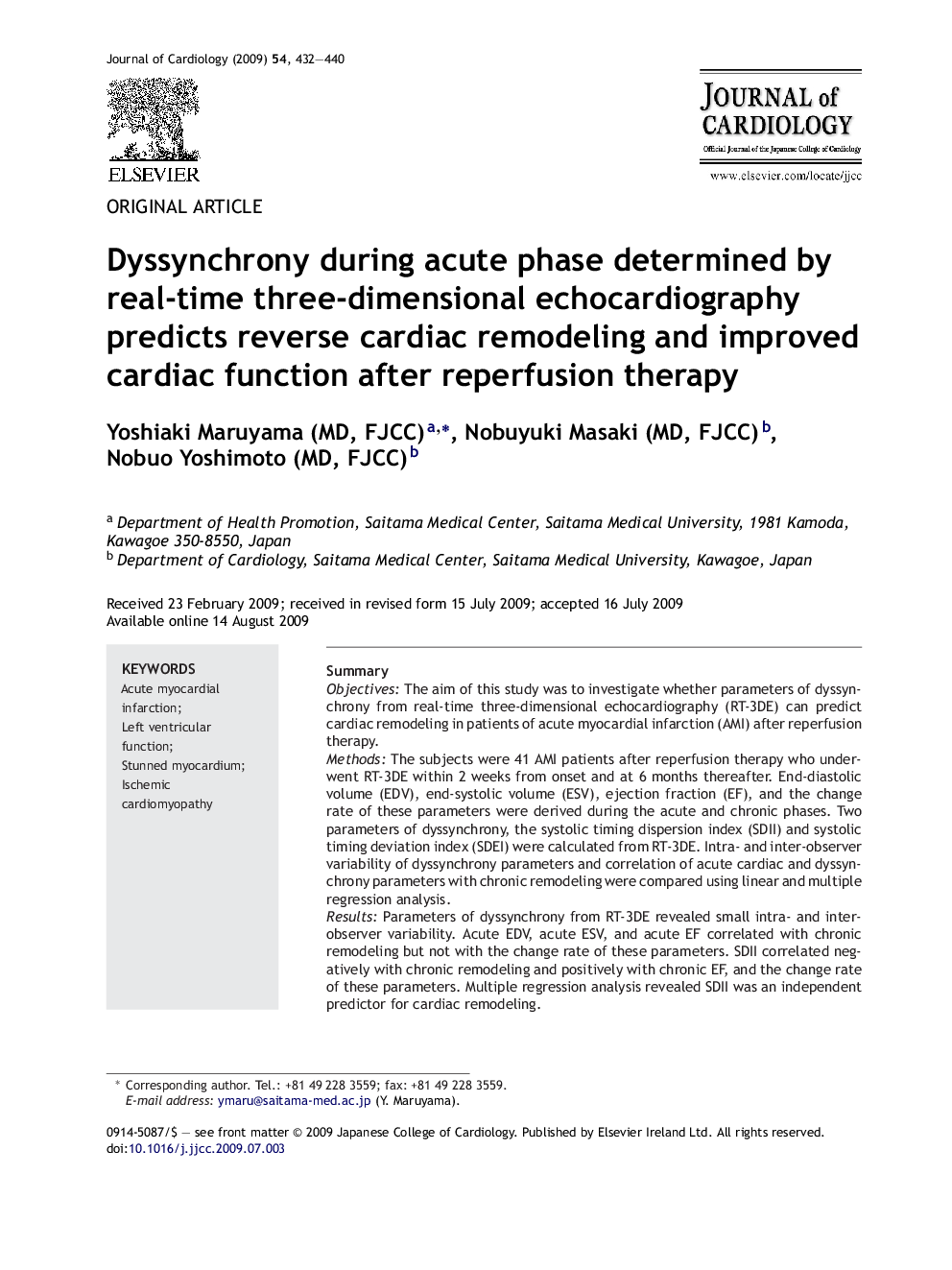| Article ID | Journal | Published Year | Pages | File Type |
|---|---|---|---|---|
| 2963541 | Journal of Cardiology | 2009 | 9 Pages |
SummaryObjectivesThe aim of this study was to investigate whether parameters of dyssynchrony from real-time three-dimensional echocardiography (RT-3DE) can predict cardiac remodeling in patients of acute myocardial infarction (AMI) after reperfusion therapy.MethodsThe subjects were 41 AMI patients after reperfusion therapy who underwent RT-3DE within 2 weeks from onset and at 6 months thereafter. End-diastolic volume (EDV), end-systolic volume (ESV), ejection fraction (EF), and the change rate of these parameters were derived during the acute and chronic phases. Two parameters of dyssynchrony, the systolic timing dispersion index (SDII) and systolic timing deviation index (SDEI) were calculated from RT-3DE. Intra- and inter-observer variability of dyssynchrony parameters and correlation of acute cardiac and dyssynchrony parameters with chronic remodeling were compared using linear and multiple regression analysis.ResultsParameters of dyssynchrony from RT-3DE revealed small intra- and inter-observer variability. Acute EDV, acute ESV, and acute EF correlated with chronic remodeling but not with the change rate of these parameters. SDII correlated negatively with chronic remodeling and positively with chronic EF, and the change rate of these parameters. Multiple regression analysis revealed SDII was an independent predictor for cardiac remodeling.ConclusionsDyssynchrony parameters derived from RT-3DE are useful for predicting reverse cardiac remodeling and further improvement in cardiac function.
